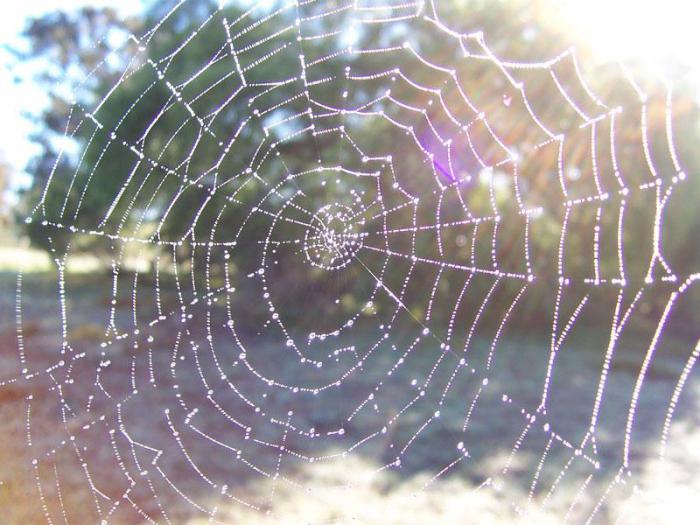Red spider with white belly. Where did the tarantula spiders have a blue color
The spider-tarantula gave the researchers a secret of blue color. Although dozens of species of spiders have a bright blue color, they themselves do not distinguish it.
An unusual blue color, which has many species of tarantulas, was a real mystery of nature. It is not a signal for potential sex partners or rivals, as the spiders do not perceive it. It is also strange that the blue color is the same for all of them, although it is created in different ways. Why and for whom the blue tarantula "invented" this color signal, scientists are not known, researchers report in the journal Science Advances.

Blue legs of a tarantula (Poecilotheria Metallica) Photo: © Michael Kern
In the animal world there is no shortage of bright colors, often a colorful game of flowers occurs even without any pigments - only because of refractive nanostructures. Particularly striking is the example of iridescent wings of butterflies, berries or shells of sea crabs with all the colors of the rainbow. Even some dinosaurs used such nanostructures, and their feathers were poured.
About the spiders-tarantulas (they are also called bird-eaters) it is known that in all seven subfamilies and in most species their legs and back part of the body are blue. But how this color arises, why it is used, and what is the magnitude of the color spectrum of spiders, is still only partially known. Bor-Kai Hsiung from the University of Akron in Ohio and his colleagues, first studied the coloring of tarantula spiders of 53 species.

Rear view of the spider-tarantula - the photo below shows an increase in their colored hairs Photo: © Tom Pattersonl, Hsiung and others / UC San Diego
One color in many species of tarantula spiders
The first surprise was that the blue color is caused by spider-tarantulas not by a single nanostructure, but by a minimum of three completely different ways. In some species, the required refraction is created by smooth, rod-shaped hairs, while others have hairs that hang from the sides or flat oars instead. These hairs, in turn, differ in their properties. There are both spongy and strictly ordered multilayered nanostructures.
As the researchers found, the blue color should have appeared in the genealogical tree of tarantulas independently of each other at least eight times. This led to the fact that even closely related species developed various methods. Therefore, there are so many different nanostructures.
Same color shade of blue tarantula spiders
The second surprise was that all tarantula spiders, despite the differences, had one shade of blue. "The color is concentrated in the wavelength range from about 20 nm to 450 nm" and coincides even in distantly related species regardless of the nanostructure of the hair.

Tarantula spiders can not perceive their blue color © Michael Kern
"This is even more surprising, given how quickly the color of the structure can change." Bor-Kai Hung
In butterflies, the shade of the color of the wings can change, for example, for several generations through targeted selection. Enough even a tiny change in the size or distance between nanostructures to make blue out of red. But why tarantulas hundreds of millions of years shine only in blue?
The blue tarantula spider does not see its own color
One possible explanation could be the use of spiders of this color as an important signal - for example, when choosing partners or between rivals. Many birds and butterflies happen. "Sex selection is usually considered a typical effect, which rather increases the variety of colors and patterns in related species," the researchers say. But not in tarantulas.
"Although they, like all spiders, have eight eyes, their visual acuity and color discrimination is very limited."
Bor-Kai Hung
Spider-tarantulas are night hunters who guard their prey in crevices or burrows.
Spiders only see in the wave region about 500 nm, however, 450 nm of blue color lie already outside their range. In other words, tarantulas can not perceive the glowing blue of their relatives.
"All this indicates that the blue color of tarantulas is not an intraspecific signal, but appeared for other purposes." A narrow range of wavelengths and evolutionary stability indicate a signal function - but who is the recipient of these signals remains unclear. "
Bor-Kai Hung
To find this out, further research is needed.
Most spiders do not cause pleasant, warm feelings in many people. And rather, on the contrary - they try to drive them away or take them away, because they cause fear and fear, and this despite their not very large size. But already today, interest in spiders as pets is growing. Especially popular are the exotic species of spider-eaters, such as, for example, Lampropelma violaceopes, Cyriopagopus sp. Blue. These species of spiders have appeared relatively recently, you rarely see them in collections.
But the blue and blue spiders are quite large and have a bright color throughout the trunk and legs. If we take into account the fact that the poison of such spiders is dangerous, it is better not to breed them to beginners, because special skills will be required to deal with these exotic creatures. But the former collector would be pleased to have such a colorful spider.
 Blue spider tarantula in a mature state can reach nine centimeters, and given the scope of its huge paws, all twenty-five. Of course, such a spider can not be kept just in the bank, and who would have become, the pleasure is by no means cheap. Usually, arthropods are placed in vertical terrariums, with a built-in drinking bowl. The substrate, which is used as a litter on the bottom of the terrarium, should be a layer of at least seven centimeters. The temperature in the terrarium is from twenty-five to twenty-seven degrees. Humidity should not exceed eighty percent. For sheltering spiders, the pieces of bark, snags or branches are best.
Blue spider tarantula in a mature state can reach nine centimeters, and given the scope of its huge paws, all twenty-five. Of course, such a spider can not be kept just in the bank, and who would have become, the pleasure is by no means cheap. Usually, arthropods are placed in vertical terrariums, with a built-in drinking bowl. The substrate, which is used as a litter on the bottom of the terrarium, should be a layer of at least seven centimeters. The temperature in the terrarium is from twenty-five to twenty-seven degrees. Humidity should not exceed eighty percent. For sheltering spiders, the pieces of bark, snags or branches are best.
 Blue tarantula spiders were discovered and imported from Malaysia. They are quite aggressive and fast, especially at night. You can feed such a spider with standard fodder insects, a cricket gorilla, banana, large Drosophila, Madagascar sizzling cockroaches. When the female reaches 2-3 years old, it becomes sexually mature. Male usually earlier, about 2 years. Like most species of tarantulas, the female can mate when it mates, and, as a rule, behaves aggressively. Eggs lay large eggs, but not more than one hundred and fifty for one masonry. Throughout life, blue spiders, like all their relatives, moult and change color several times.
Blue tarantula spiders were discovered and imported from Malaysia. They are quite aggressive and fast, especially at night. You can feed such a spider with standard fodder insects, a cricket gorilla, banana, large Drosophila, Madagascar sizzling cockroaches. When the female reaches 2-3 years old, it becomes sexually mature. Male usually earlier, about 2 years. Like most species of tarantulas, the female can mate when it mates, and, as a rule, behaves aggressively. Eggs lay large eggs, but not more than one hundred and fifty for one masonry. Throughout life, blue spiders, like all their relatives, moult and change color several times.

Poecilotheria metallica - was discovered in 1899 by the acronym Pocock, but despite the fact that this species was described more than 100 years ago, it still remains one of the rarest spiders in the collections of lovers of the whole world. Every amateur wanted to have this excellent spider in his collection. The color of this spider impresses even seasoned keeper, blue with a gray-white pattern looks very impressive. On the legs also there are yellow bands that are particularly noticeable from the bottom. Individuals from southern India have a black coloring. At bright coloring the spider has also rather large sizes, bodies at Poecilotheria metallica 6-7см, and the scope of legs can reach 16-17см.
Let's study it in detail ...
Picture 2. 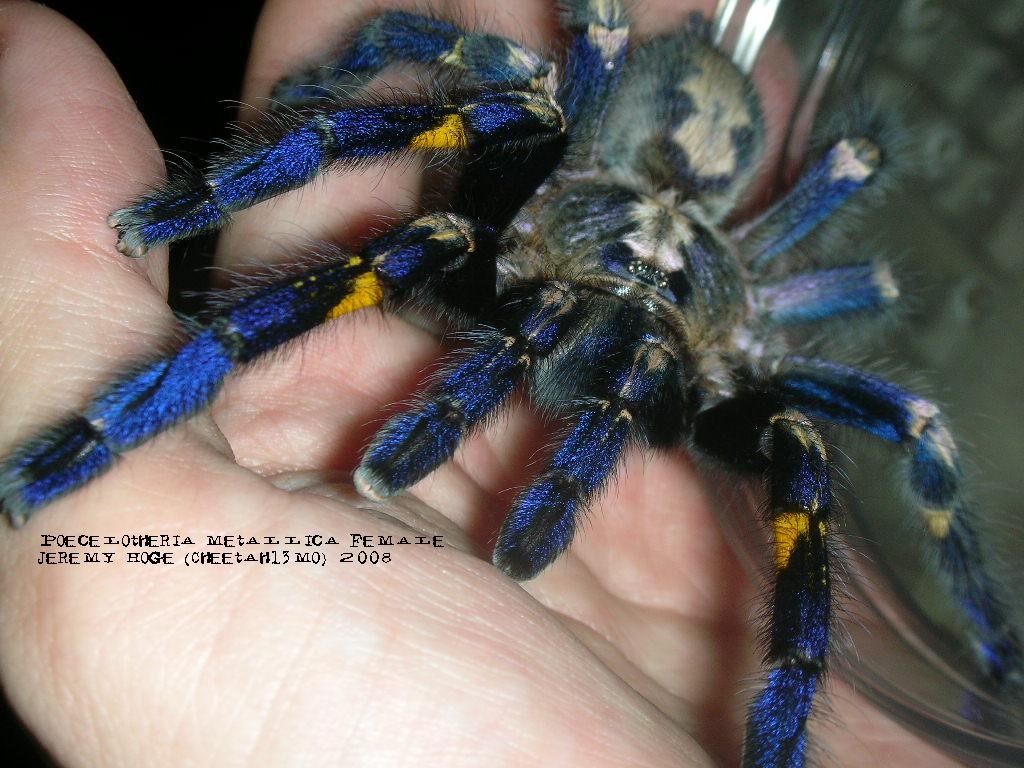
The arid habitat of these spiders is the tropical forests of southwestern India. Spiders of this species can be found high in the crown of Old trees, young individuals often meet at the base of trees, sometimes even in a hole that is carefully braided with cobwebs, at the slightest danger in a moment, the baby hides in this burrow, so when keeping juveniles at home, capacity of horizontal type with a thickness of ground 3-4cm. Representatives of this species live up to 15 years, but in spite of this they have rather fast growth rates. Like most spiders of the genus Poecilotheria, Poecilotheria metallica takes a defensive stand when in danger and, if the source of danger approaches, will certainly use its chelicera.
A photo 3. 
The poison of this species is considered to be potent, therefore bitten, will not seem a little. In addition, this kind is quite athletic - they can jump and run very fast, so novice keeper is not advised to start such spiders, although considering all of the above, few would have resisted. Young spiders up to 3-4l. can be kept not in large groups of 4-5 individuals in the volume, the main condition for group content is: a sufficient area and a sufficient number of shelters for each individual. Otherwise, during moulting, one of them may become a victim of an attack by his brother. For the maintenance of one adult, a terrarium of a vertical type of 20x20x30 size will suffice. For the nesting of a nest, a spider needs some kind of foundation; as such, a piece of bark of cork oak, which follows, will be installed vertically inside the terrarium.
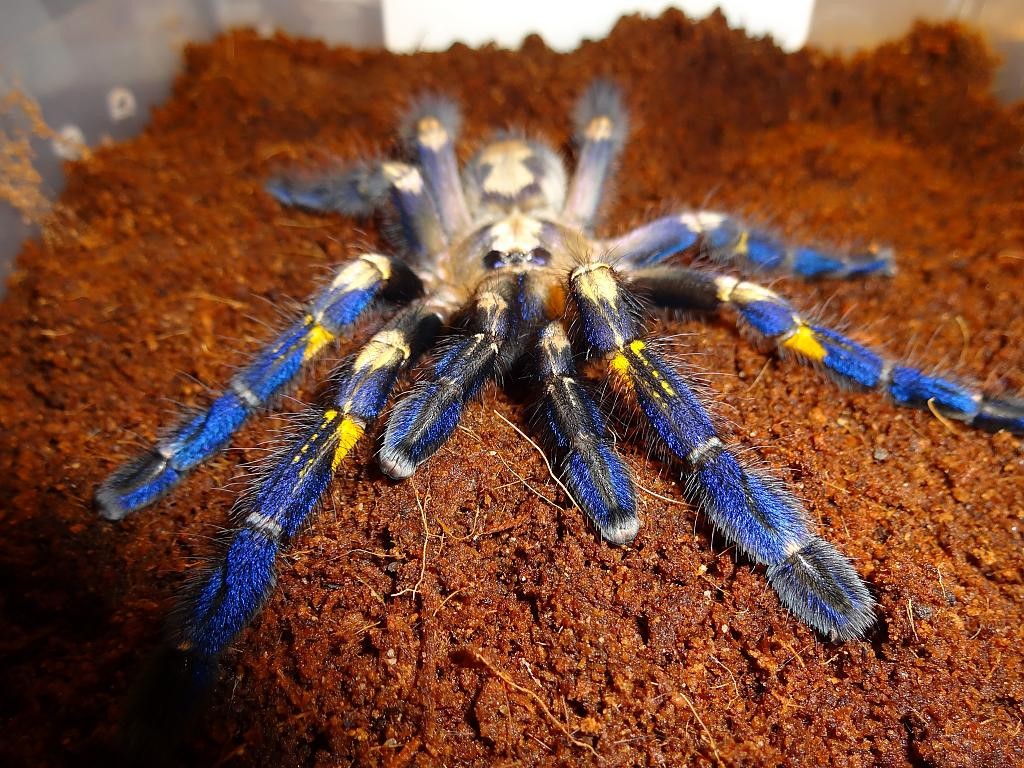
As a food, any insect of suitable size (cricket, locust, zofobas, cockroach) will suit. Sexual maturity on average occurs in females after 2-2,5 years, in males 1-1,5 years. The bite of this species is very taxing and can cause complications on health even in an adult, healthy person. In captivity, Poecilotheria metallica is not currently bred very often. The males of this species do not immediately approach the females, therefore it is not always possible to follow the pairing, but if everything goes well, after a few months the female weaves a cocoon, which she will protect for another 2 months, after which the cocoon will be opened by the chelicerae of the female and from it will appear from 80 to 160 small pretty spiders.
Picture 5. 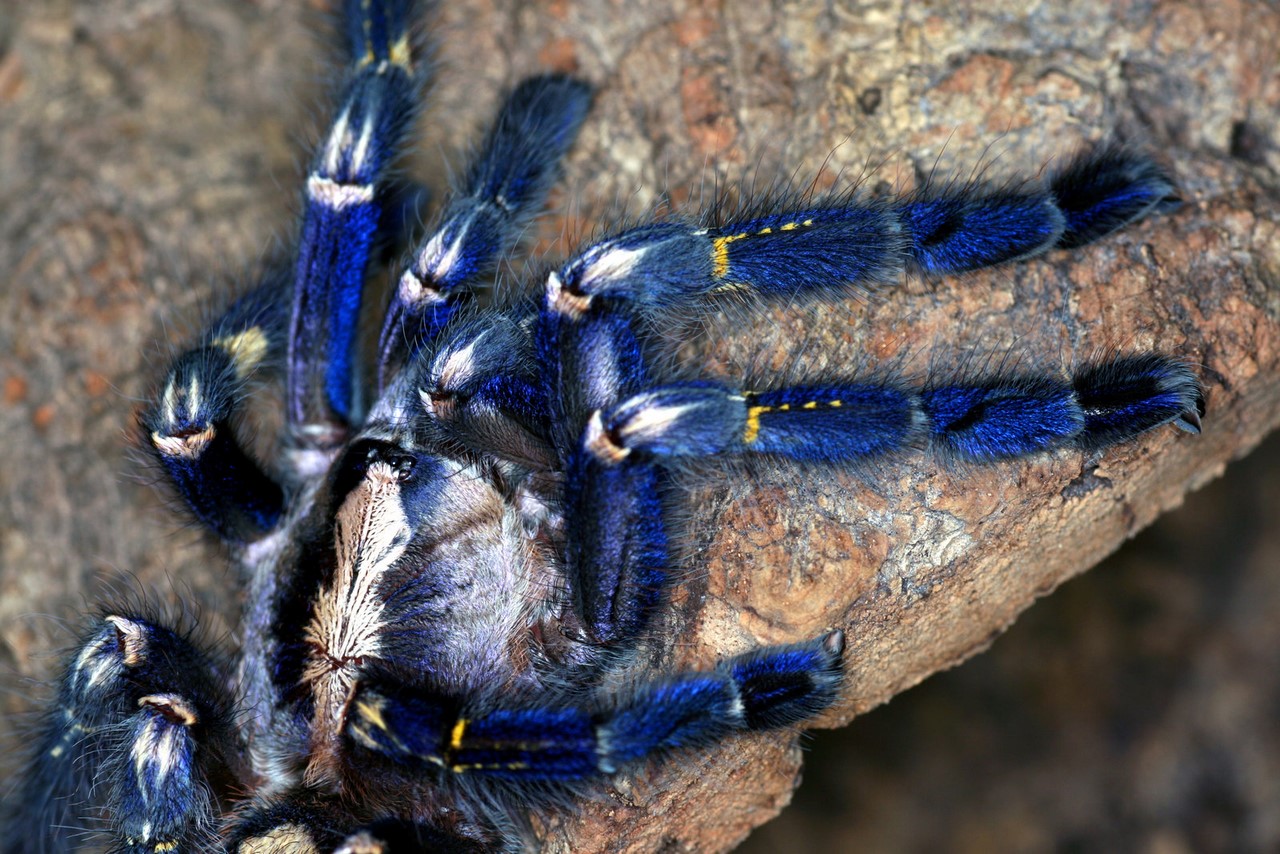
Family Poecilotheriaattracts the attention not only of skilled and professional keeper, but also newcomers. Indeed, they are very difficult to resist: an interesting character, activity, a very bright and beautiful coloring, a large size make them a welcome guest in any collection.
But you can not get them all for two reasons. It is a very toxic poison and so unpredictable behavior that you can never guess where it will run or jump. The Internet is full of photos and videos, where this spider sits on his hands. After such videos and photos, people stop being afraid of them and take two of these spiders in their arms. To me, like many keepers, all spiders are cute and interesting. But I will not advise starting this kind of newcomers or amateurs. The poison is quite toxic, and if you bite an adult spider, the consequences can be within two weeks.
A photo 6. 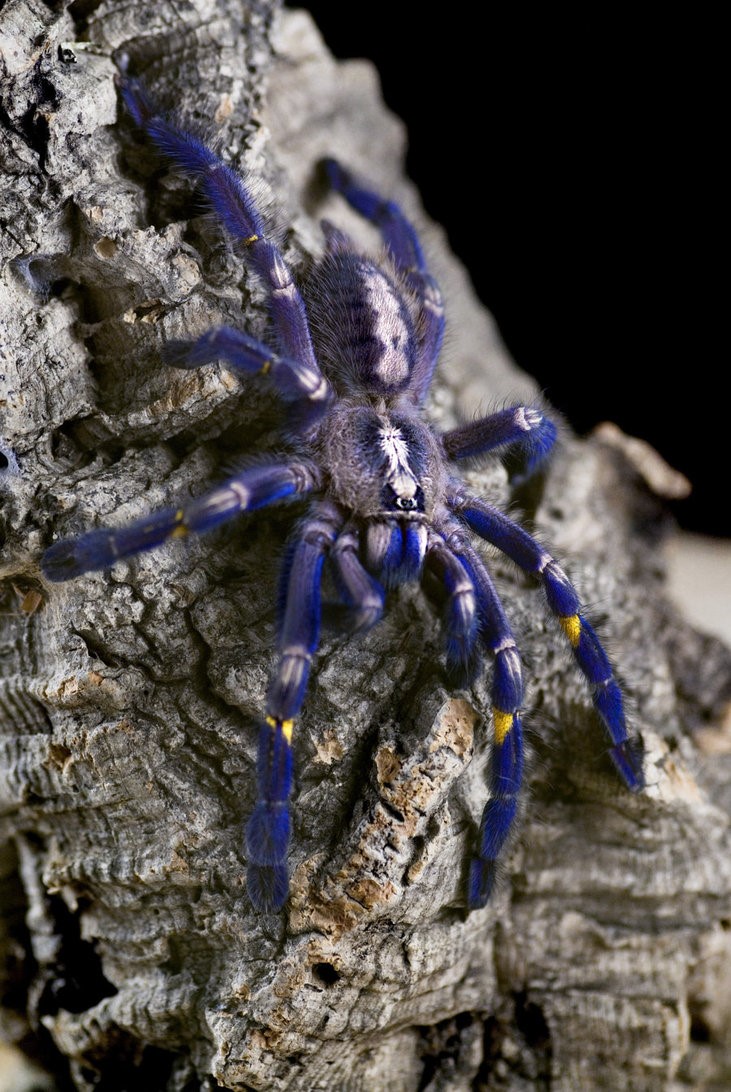
Therefore, before buying it is very good think, do you need this spider. There are quite a few interesting tarantulas, not as dangerous as this one. For example, the genus Psalmopoeus and the genus Tapinauchenius. This, of course, is also not an angel, but they are not so dangerous.
A photo 7. 
If you still decided to stop your choice on Poecilotheria metallica,then now I'll tell you how to keep it.
This spider is a woodpecker, in nature lives in the crowns and hollows of trees. There he builds himself an airy nest and sits there all day long before dusk. It is necessary to create similar conditions in the terrarium. To do this, the terrarium must be content high, about 45 centimeters in height. The bottom area can be relatively small, about 30x30 centimeters. At the bottom it is necessary to fill 2-3 cm of coconut substrate, they do not need any more. Just put a piece of bark and twigs in the terrarium. The spider should always have access to fresh and clean water. Change the water in the water bowl every day
A photo 8. 
The terrarium must have a hydrometer and a thermometer to control temperature and humidity. The temperature for the content of this spider should be 24-28 degrees, and the humidity should be 75-80 percent. With such a high humidity, there should be very good ventilation, so if you keep the spider not in the terrarium, but in a plastic container, then make more air holes in it.
With the feeding of these tarantulas there are no problems. They have a very good appetite, they seldom act capriciously in this regard. As feed insects, crickets, locusts, marble cockroaches, cherry cockroaches, Madagascar cockroaches and zofobas are suitable.
If you want your tarantula to grow actively, then it should always have access to food. This applies to small spiders, large spiders eat food and they live less.
A photo 9. 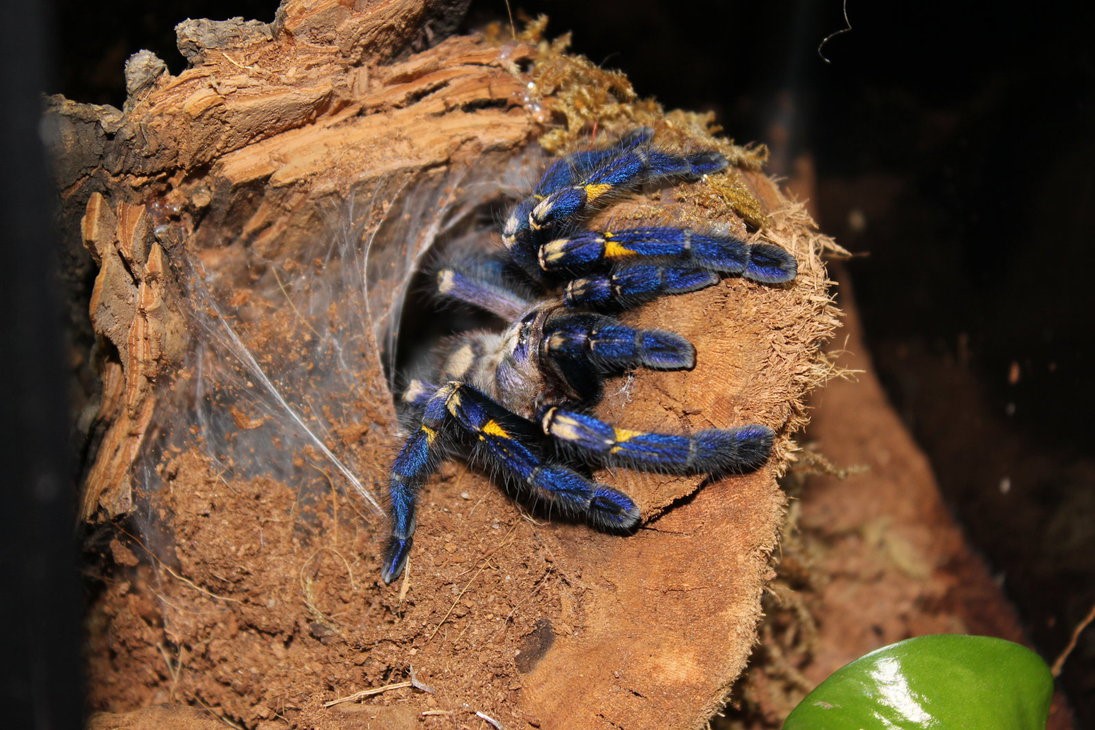
A photo 10. 
Picture 11. 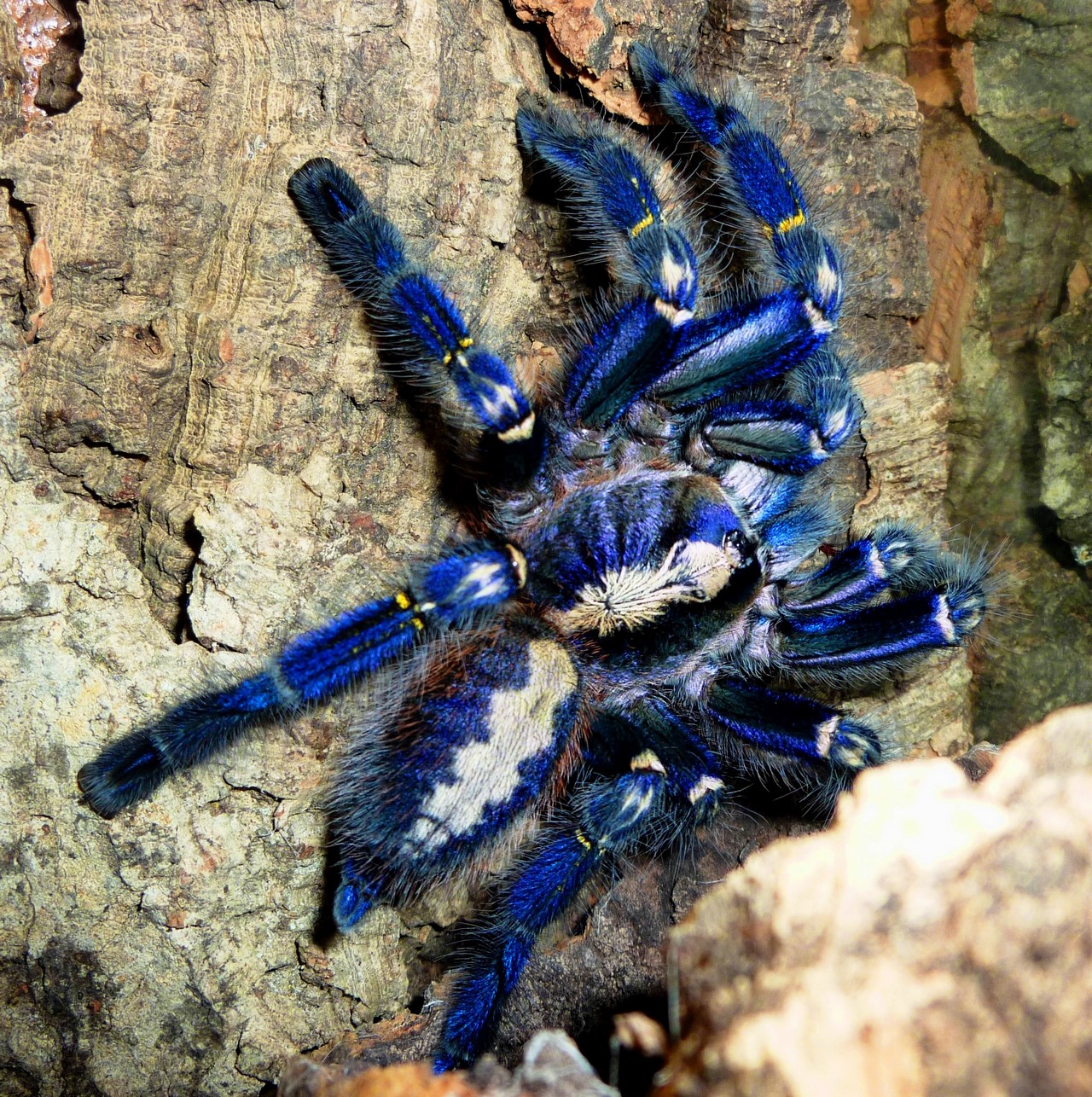
Picture 12. 
A photo 13. 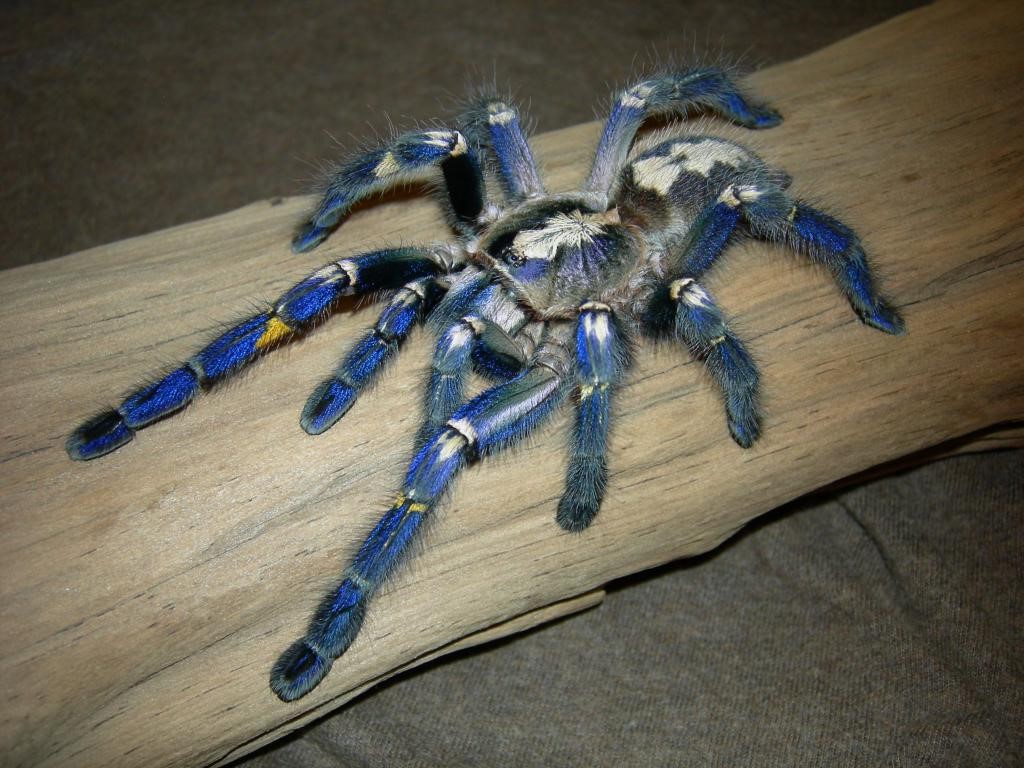
Picture 14. ![]()
Picture 15. 
Picture 16. 
A photo 17. 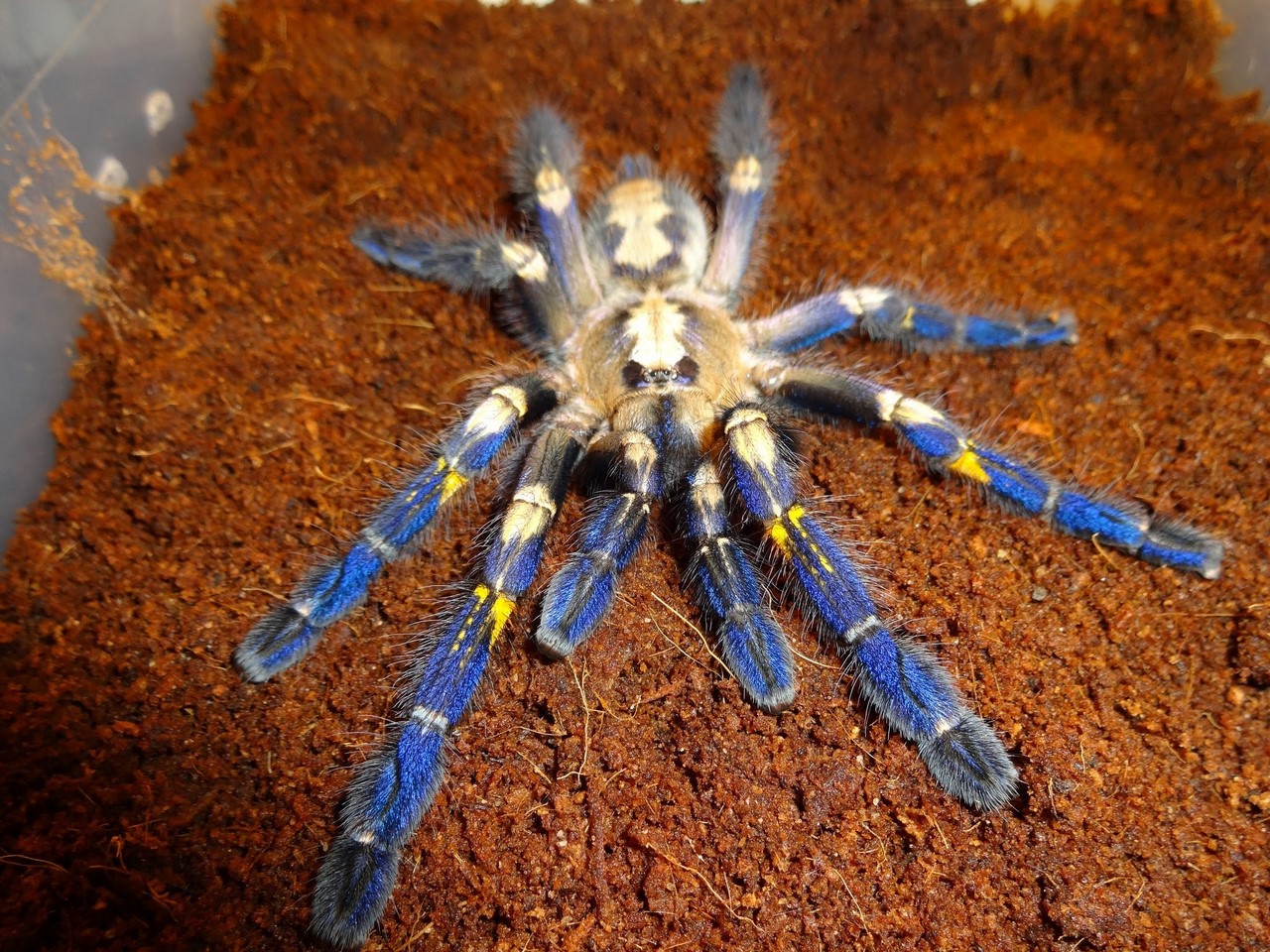
Picture 18. 



